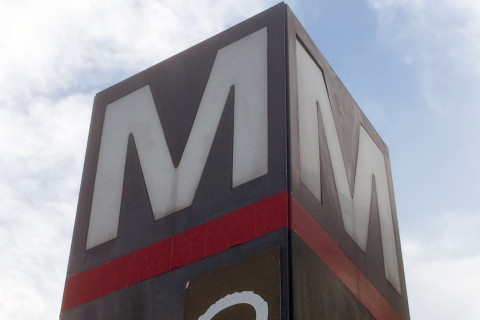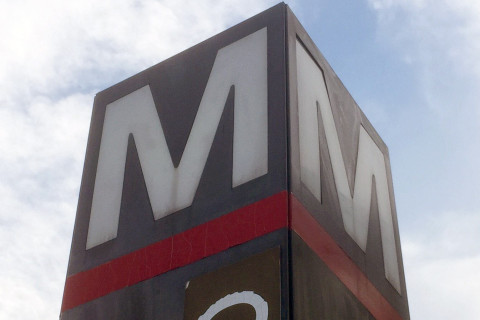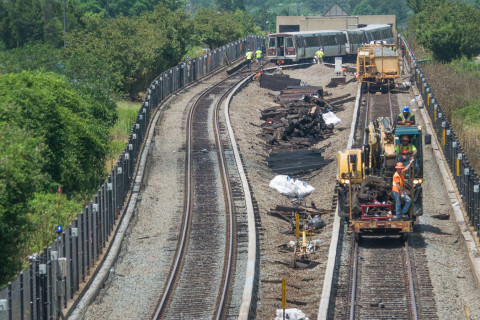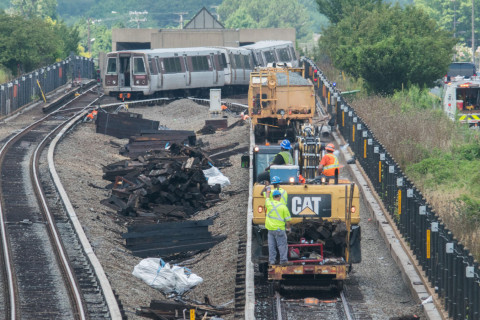WASHINGTON — Amid concerns about under staffing and botched track inspections, federal regulators say the single biggest step Metro could take to preserve the integrity of its aging tracks is unclogging its drains.
That recommendation is part of a scathing report released Monday that included 12 safety findings and corrective actions. Among the other findings are the fact that Metro’s track inspection, maintenance and supervision teams are all “significantly understaffed,” the report found.
The Federal Transit Administration team with temporary safety oversight of Metro said the “single most valuable action” Metro could take to preserve track integrity “is to place a clear priority on maintaining and unclogging drains in tunnels.”
Metro conducted urgent drainage work on the Red Line earlier this year, and has included the drain cleaning in recent 24/7 work zones.
But it’s long overdue, the report suggested.
“During May, when the drains were unclogged and restored to good condition on a stretch of the Red Line between Medical Center and Friendship Heights, WMATA employees informed [FTA] that this type of work on the drainage system, including mud removal and clearing of drains, had not been performed in many years,” the report said.
The report said drain maintenance “should be a much higher priority” for Metro given the “corrosive and deleterious effects of water on track infrastructure.”
The track safety investigation also consistently found that because of the large size of the Metro system and the barriers to accessing parts of the system at certain times, the track inspection and maintenance teams need more workers. Those workers also need better training, the investigation found.
The findings determined Metro does not make the most of its high-tech automated track inspection vehicle. The FTA said Metro should have a full-time crew for the Track Geometry Vehicle that is fully trained to use all sensors on board.
As of June, Metro had five employees certified to analyze ultrasonic scans and verify potential problems. Only one of those employees is part of the automated inspection vehicle’s crew.
The investigation found that track inspection supervisors rarely complete the checks of track inspections that they are supposed to, and track inspectors often skip inspections of key switches and crossovers.
“While twice weekly walking inspections are supposed to include special trackwork in a given track inspector’s territory, interviews and observations indicated that track inspectors do not typically inspect these areas, and rely instead on the detailed monthly inspections,” the report found. “Further, the FWSO’s team found that detailed monthly inspections of switches and turnouts ranged in quality and thoroughness.”
An issue at a location where trains switch from one track to another led to a derailment last month.
“Throughout the track integrity investigation, the … team found missing bolts and excessive wear in switches and crossovers, and deficient wood crossties in ballasted sections throughout the system,” the FTA said.
Track inspectors who do find issues that could require trains slow down for safety do not always get the speed restrictions put in place either.
A manual says “Speed restrictions are to be applied only when the components are defective from a safety point of view (i.e. when the safety of the track may be compromised). For components, which are defective from a maintenance point of view, speed and/or other restrictions are imposed at the discretion of the track supervisor.”
“This statement has enormous impact on WMATA’s track inspectors. Some track inspectors encountered by the FWSO teams in the field were reluctant to place speed restrictions due to fear of punitive redress or the difficulty of arguing a situation,” the federal oversight report finds.
In addition to the issues with track inspection supervisors, maintenance managers “have varying levels of training and experience …. receive little formal training…and WMATA has little written guidance,” the report said. In addition, track inspection reports are not regularly updated to reflect current conditions, as track inspectors fail to update or change reports as conditions change.








